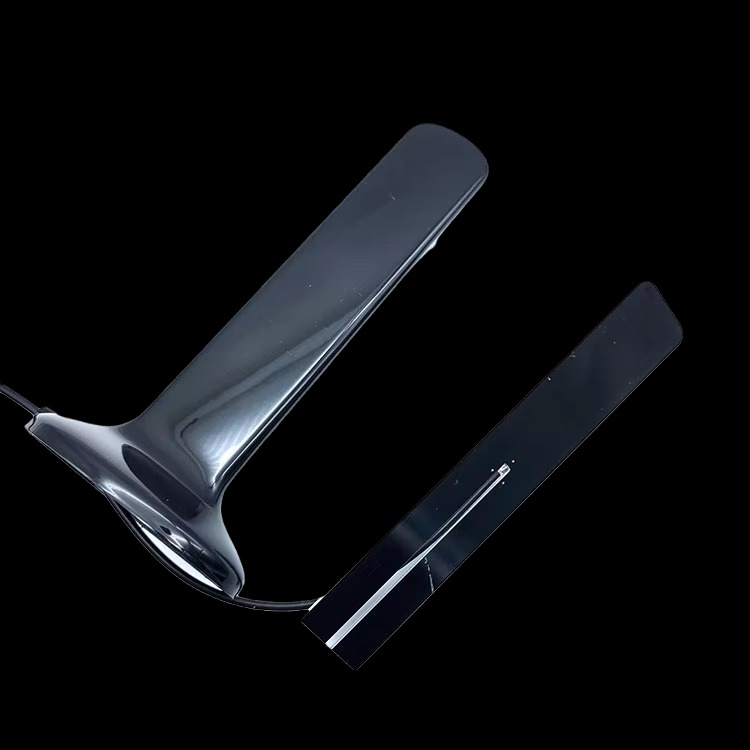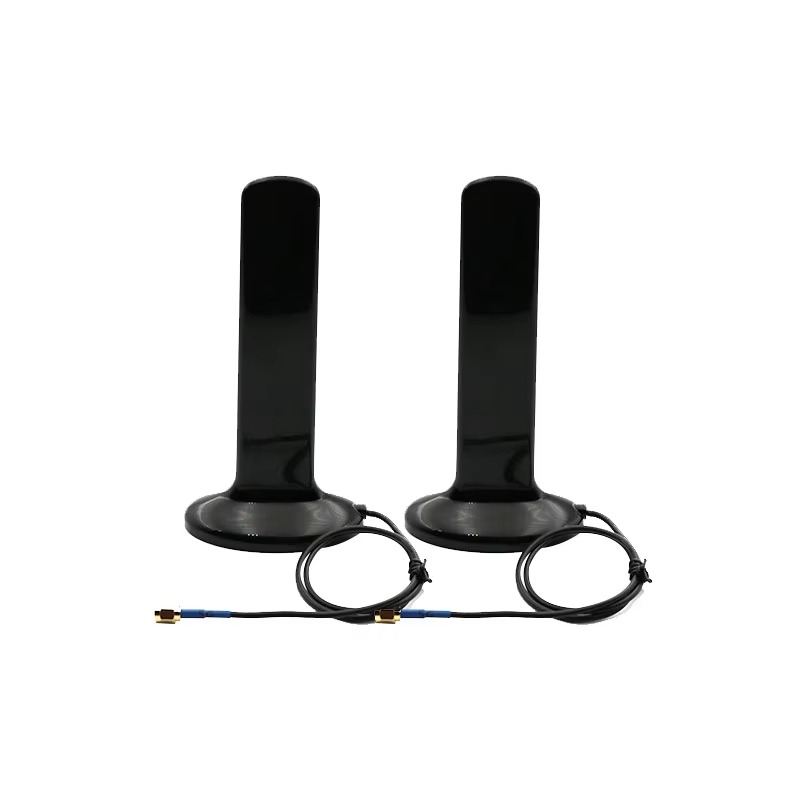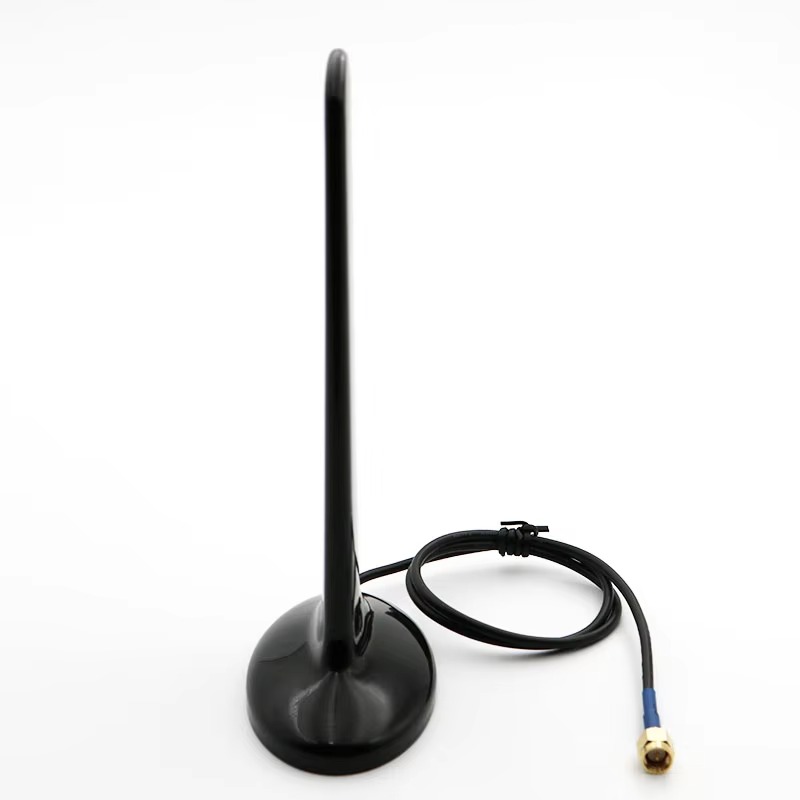Overview
A 4G WiFi GPS combination antenna integrates three distinct communication systems into a single housing or co-located array: 4G LTE (Long-Term Evolution) for wide-area cellular connectivity, WiFi (typically 2.4 GHz and 5 GHz bands) for short-range data exchange and hotspot functionality, and GPS (Global Positioning System) operating at 1.57542 GHz for real-time location tracking. This integration enables vehicles to maintain constant internet connectivity, provide onboard WiFi for passengers, and deliver precise geolocation data for navigation, route optimization, and vehicle tracking—all through one unified antenna solution.
The primary advantage of such a combination lies in system simplification. Instead of installing multiple discrete antennas on a vehicle’s roof or body—each requiring separate mounting points, cabling, and grounding—manufacturers and fleet operators can deploy a single, aesthetically pleasing unit that reduces wind noise, installation complexity, and potential points of failure. These antennas are typically designed with omnidirectional radiation patterns to ensure consistent signal reception regardless of vehicle orientation or direction of travel, which is critical for mobile applications.
In automotive environments, signal reliability is paramount. Vehicles operate in highly dynamic RF conditions—moving through urban canyons, tunnels, rural areas, and regions with varying network coverage. A well-designed combination antenna must therefore exhibit robust performance across diverse frequency bands, maintain low insertion loss, and resist interference between co-located transmitters and receivers. Additionally, environmental durability is essential; these antennas are exposed to extreme temperatures, moisture, UV radiation, vibration, and mechanical stress, necessitating ruggedized enclosures made from UV-resistant plastics, rubber seals, and corrosion-proof connectors.
Modern 4G WiFi GPS antennas often incorporate active components such as low-noise amplifiers (LNAs) for GPS and filtering circuits to isolate signals and prevent desensitization of sensitive GPS receivers by strong 4G transmissions. Some advanced models also support MIMO (Multiple Input Multiple Output) configurations for 4G LTE, enhancing data throughput and link reliability by using two or more antenna elements per band.
With the ongoing transition toward 5G and V2X (Vehicle-to-Everything) communication, current 4G-based combination antennas serve as a crucial bridge technology, offering backward compatibility while supporting the growing bandwidth and latency requirements of connected vehicles. As automotive OEMs and aftermarket providers seek to deliver seamless user experiences, reduce hardware footprint, and improve service reliability, the 4G WiFi GPS combination antenna has become an indispensable component in the modern vehicle’s communication architecture.
Design and Construction
The design and construction of a 4G WiFi GPS combination antenna for vehicle use involve a sophisticated balance of electromagnetic engineering, mechanical robustness, and multi-band integration. The primary challenge lies in accommodating three different frequency ranges within a single compact enclosure while ensuring minimal mutual coupling, optimal radiation efficiency, and environmental resilience. The antenna must operate effectively across 4G LTE bands (ranging from 698 MHz to 2700 MHz depending on regional standards), dual-band WiFi (2.4 GHz and 5 GHz), and GPS L1 (1.57542 GHz), each with distinct impedance, polarization, and gain requirements.
Typically, these antennas employ a multi-element array architecture, where individual radiating elements are strategically arranged to minimize interference. For instance, a common configuration includes a wideband monopole or dipole for 4G LTE, a planar inverted-F antenna (PIFA) or patch antenna for WiFi, and a dedicated GPS patch element optimized for right-hand circular polarization (RHCP). These elements are mounted on a shared ground plane, often integrated into a metal base that serves as both a mechanical mount and an RF reference.
Material selection is critical. The substrate for internal PCBs usually consists of low-loss dielectric materials such as Rogers RO4003 or FR4 with controlled permittivity to maintain consistent impedance (typically 50 Ω). The outer radome is made from UV-stabilized polycarbonate or ABS plastic, designed to be aerodynamic and weatherproof. Internal components may be potted with silicone to prevent moisture ingress and dampen vibrations.
To handle the broad 4G LTE spectrum, wideband or multi-resonant designs are employed. Techniques such as meandering, fractal geometries, or parasitic loading help achieve resonance across multiple LTE bands without significantly increasing size. For GPS, a ceramic patch radiator is commonly used due to its high Q factor and ability to produce near-ideal RHCP, essential for capturing satellite signals effectively. WiFi elements are often miniaturized PIFAs or inverted-L structures etched directly onto the main PCB.
Impedance matching networks, including LC circuits and transmission line stubs, are used at each feed point to ensure maximum power transfer and low VSWR (<2:1) across all operational bands. Filters—such as bandpass or bandstop—are integrated to prevent out-of-band interference, especially from high-power 4G transmissions that could overload the sensitive GPS receiver front-end.
Mechanically, the antenna is designed for easy installation on vehicle roofs, trunks, or external brackets using magnetic, screw-mount, or adhesive bases. Connectors are typically SMA, FAKRA, or TS9 types, chosen for durability and compatibility with automotive-grade coaxial cables. Some advanced models feature integrated surge protection and ESD shielding to withstand lightning-induced transients and electrostatic discharge.
Manufacturing involves precision assembly, automated testing, and environmental validation (thermal cycling, salt spray, vibration tests) to meet automotive standards such as ISO 16750 and IP67/IP6K9K ratings. Simulation tools like CST Microwave Studio or ANSYS HFSS are used extensively during the design phase to model S-parameters, radiation patterns, and SAR levels before prototyping.
Ultimately, the success of a 4G WiFi GPS combination antenna hinges on its ability to deliver consistent, high-fidelity signal performance under real-world driving conditions, making it a cornerstone of reliable vehicular connectivity.
Working Principles
The operation of a 4G WiFi GPS combination antenna is based on the fundamental principles of electromagnetic wave propagation, resonance, and signal isolation across multiple frequency domains. Each integrated function—4G LTE, WiFi, and GPS—relies on specific antenna characteristics to transmit and receive signals efficiently while minimizing interference between co-located systems.
For 4G LTE connectivity, the antenna functions as a wideband radiator capable of resonating across multiple frequency bands used in cellular networks (e.g., Band 12/13/17 at 700 MHz, Band 2/4 at 1900 MHz, and Band 7 at 2600 MHz). The radiating element, often a monopole or dipole variant, is designed to support quarter-wave or half-wave resonance at the lowest operating frequency, with harmonic responses or parasitic elements extending coverage to higher bands. When transmitting, the antenna converts RF energy from the LTE modem into electromagnetic waves that propagate through the air; during reception, it captures incoming signals and guides them back via coaxial cable to the receiver. MIMO configurations use two spatially separated elements to improve data rates and link stability through spatial diversity.
WiFi operation at 2.4 GHz and 5 GHz typically employs a separate radiating structure, such as a PIFA or microstrip patch, tuned to resonate at these frequencies. These bands support high-speed data transfer for passenger hotspots, firmware updates, or vehicle-to-infrastructure (V2I) communication in parking lots or depots. The antenna must provide sufficient gain and omnidirectional coverage to ensure consistent connectivity within the vehicle cabin and nearby surroundings.
GPS reception operates differently due to the nature of satellite signals. GPS satellites transmit low-power RHCP signals at 1.57542 GHz. The GPS element—usually a ceramic patch antenna—is engineered to match this polarization and focus reception toward the sky (hemispherical coverage). Upon capturing the signal, it feeds into a low-noise amplifier (LNA) located close to the antenna to boost the weak signal before transmission loss occurs over the coaxial cable. A bandpass filter ensures only GPS frequencies pass through, rejecting interference from nearby 4G or WiFi transmissions.
Signal isolation is achieved through physical separation, filtering, and sometimes diplexing/duplexing circuits. For example, a triplexer may combine the three signal paths into a single cable or separate them using distinct ports. Grounding strategies and shielding between elements prevent coupling, while careful layout ensures that high-power LTE signals do not desensitize the GPS receiver.
In practice, the antenna continuously adapts to changing signal conditions as the vehicle moves. Adaptive algorithms in the connected modems and GNSS receivers dynamically select the best frequencies, adjust power levels, and switch between networks to maintain optimal performance. The combination antenna thus acts as a passive yet intelligent gateway, enabling seamless integration of voice, data, and location services essential for modern connected vehicles.
Advantages and Challenges
-
The deployment of 4G WiFi GPS combination antennas in vehicles offers numerous advantages, chief among them being integration, cost efficiency, and enhanced reliability. By consolidating three critical wireless functions into a single unit, these antennas reduce the number of roof penetrations, simplify cabling, and improve vehicle aesthetics. This streamlined installation lowers labor costs and minimizes the risk of water leakage or structural weakening. Moreover, centralized design allows for better electromagnetic compatibility (EMC) management, reducing interference between systems and improving overall signal integrity.
Another key benefit is space optimization. Especially in commercial fleets, emergency vehicles, and RVs, where multiple communication systems are required, having a single multi-function antenna frees up valuable real estate for other sensors or equipment. The compact form factor also reduces aerodynamic drag and wind noise compared to multiple protruding antennas.
From a performance standpoint, integrated antennas can be co-designed with optimized ground planes and filtering networks, leading to improved gain, efficiency, and reception sensitivity. Active GPS components (LNAs and filters) enhance location accuracy, even in challenging environments like urban canyons or under tree cover. Simultaneous 4G and WiFi support enables real-time data upload, remote diagnostics, and passenger internet access, enhancing both operational efficiency and user experience.
However, several challenges persist. One major issue is frequency congestion and inter-system interference. High-power 4G transmissions can overload the sensitive GPS front-end, causing desensitization or complete signal loss—a phenomenon known as "RF self-jamming." Effective filtering and physical isolation are required to mitigate this, increasing design complexity and cost.
Another challenge is achieving uniform performance across all bands. The wide frequency range of 4G LTE (700–2700 MHz) demands a broadband design that often sacrifices peak efficiency at individual bands. Similarly, achieving good GPS sensitivity in a small form factor is difficult due to the inherent limitations of miniaturized patch antennas.
Environmental factors also pose risks. Although designed to be rugged, prolonged exposure to extreme temperatures, salt, and vibration can degrade performance over time. Installation quality—such as grounding and cable routing—significantly impacts real-world performance, requiring skilled technicians for optimal deployment.
Lastly, future-proofing is a concern. With the rollout of 5G and C-V2X technologies, current 4G-based antennas may become obsolete for next-generation applications requiring higher bandwidth and lower latency. While they remain highly effective today, long-term viability depends on backward compatibility and modular upgrade paths.
Despite these challenges, the benefits of integration, reliability, and performance make 4G WiFi GPS combination antennas a preferred choice for a wide range of vehicular applications.
Applications and Future Trends
-
4G WiFi GPS combination antennas are widely deployed across various automotive and transportation sectors. In fleet management, they enable real-time vehicle tracking, driver behavior monitoring, fuel efficiency analysis, and predictive maintenance by continuously transmitting location and diagnostic data over 4G networks. Logistics companies use them to optimize delivery routes and ensure cargo security. Public transit buses and emergency vehicles rely on these antennas for AVL (Automatic Vehicle Location), dispatch coordination, and live video streaming from onboard cameras.
Passenger vehicles, especially premium and electric models, integrate these antennas to support infotainment systems, over-the-air (OTA) software updates, and mobile hotspot functionality. Ride-sharing platforms and car rentals use them for geo-fencing, usage-based insurance, and remote vehicle access. In agriculture and construction, heavy machinery equipped with combination antennas enables precision farming and equipment monitoring in remote locations.
Looking ahead, future trends point toward smarter, more adaptive antennas. The integration of 5G NR and V2X communication will drive the evolution of multi-band, multi-protocol antennas capable of supporting LTE-V, DSRC, and 5G C-V2X simultaneously. Reconfigurable antennas using RF MEMS or AI-driven tuning will dynamically adjust resonance and radiation patterns based on driving conditions and network availability.
Moreover, the shift toward software-defined radios (SDR) and edge computing will allow antennas to become part of intelligent sensing platforms, capable of radar-like functions or spectrum monitoring. Antenna-in-package (AiP) and conformal antenna designs may enable seamless integration into windshields or body panels, eliminating external protrusions.
Standardization and modular design will facilitate easier upgrades, allowing operators to swap out internal modules as new technologies emerge. As autonomous driving advances, the need for ultra-reliable, low-latency, and redundant communication systems will further elevate the importance of high-performance combination antennas.
In conclusion, the 4G WiFi GPS combination antenna is not just a transitional technology but a foundational element in the journey toward fully connected, intelligent transportation ecosystems.
Conclusion
The 4G WiFi GPS combination antenna has become an essential component in modern vehicular communication systems, enabling seamless integration of cellular connectivity, wireless networking, and global positioning. Its ability to consolidate multiple RF functions into a single, durable unit offers significant advantages in terms of installation simplicity, cost reduction, and performance reliability. As vehicles become increasingly connected and data-dependent, the role of such antennas in supporting telematics, safety systems, and user services continues to grow.
While design challenges related to interference, bandwidth, and environmental resilience remain, ongoing advancements in materials, filtering, and antenna theory are steadily improving performance and longevity. With applications spanning fleet management, public transit, emergency response, and consumer vehicles, these antennas are at the forefront of the digital transformation in transportation.
Looking forward, they will serve as a bridge to next-generation technologies like 5G, V2X, and autonomous driving, evolving to support higher data rates, lower latency, and greater intelligence. In essence, the 4G WiFi GPS combination antenna is more than just a piece of hardware—it is a vital enabler of safer, smarter, and more efficient mobility in the connected world.




































































 Language
Language
 En
En Cn
Cn Korean
Korean

 Home >
Home > 







 18665803017 (Macro)
18665803017 (Macro)













